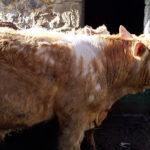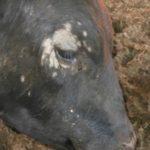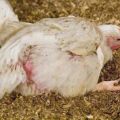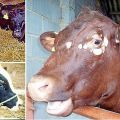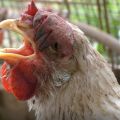Symptoms of demodicosis in cattle, treatment for a subcutaneous tick and prevention
Many farmers periodically face various diseases of cattle. These pathologies provoke a decrease in productivity, and sometimes even lead to the death of animals. One of the most common disorders is the development of cattle demodicosis. It is also often referred to as scabies. This pathology causes serious discomfort in animals and can lead to complications.
The causes of the disease
Demodectic mange is rapidly spreading among animals. The demodex mite is considered the causative agent of the pathology. It causes damage to the sebaceous glands and hair follicles in the cow. The dimensions of the pest are only 0.3 millimeters. Its body is worm-shaped and is divided into the cephalothorax and abdomen. Infection with demodicosis occurs from sick individuals, through the farmer's clothes or dirty tools. When symptoms of pathology appear in at least one animal, it must be immediately isolated.
However, it is important to systematically inspect the entire herd. It is recommended to examine calves on an equal basis with adult animals. This should be done starting at 3 months. In some situations, the infection has a mild course. However, her symptoms are not visible.
Signs and symptoms of the disease
When infected with pathology, the following symptoms are observed:
- the appearance of small bumps on the skin;
- hair loss in the area of the tick bite;
- discharge of a grayish-white fluid when pressing on the tubercle.
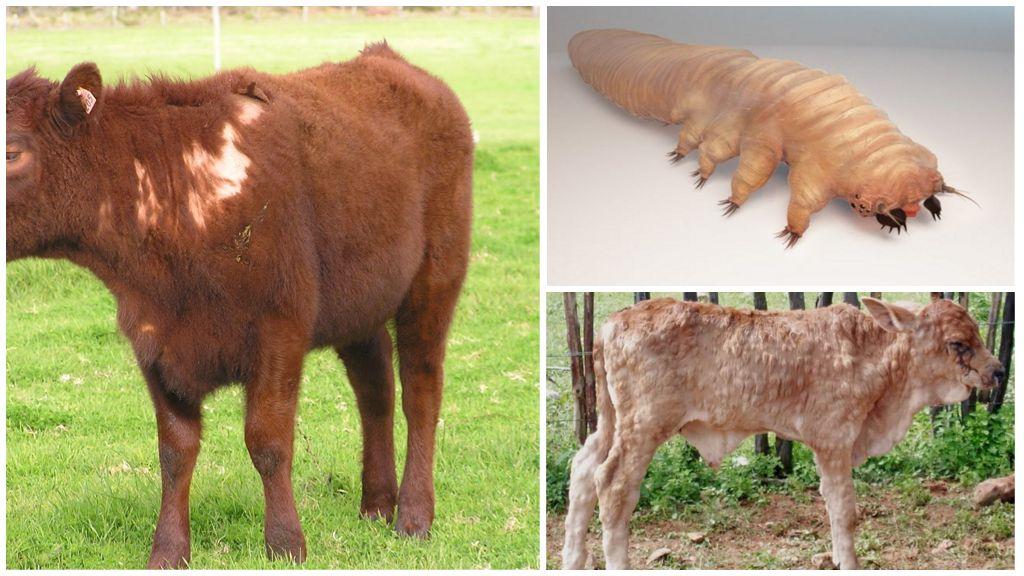
When infected with ticks, it is important to immediately contact a veterinarian who can conduct all the necessary research.
Methods for diagnosing the disease
Only a specialist can make an accurate diagnosis. Therefore, at the first symptoms, you should contact your veterinarian. When detecting characteristic bumps on the skin, it is recommended to conduct a microscopic examination.
If there is a scab in the nodular formation, it is recommended to pull it out with tweezers and examine it with a microscope. If there is no scab, it is worth taking a sample of the contents of the bump and also examining it.
If it was not possible to identify demodicosis with the help of microscopic studies, then in the area of the most frequent location of ticks, it is worth plucking out the hair.Then apply 2 drops of Vaseline oil on a clean surface, fold the skin into a fold and squeeze out the ticks with the blunt part of the scalpel. The scraping and hairs should then be examined under a microscope.
How to treat cattle demodicosis
It is possible to cope with demodicosis with folk remedies and veterinary drugs. However, it is worth starting therapy only after confirming the diagnosis. In this case, the treatment must be selected individually, taking into account the state of health and the severity of skin lesions.
Anti-scab drugs
To treat cows and eliminate subcutaneous mites, you should use the following tools:
- "Dikresil". To eliminate pathology, an emulsion with a concentration of 0.75% is used. 1 animal requires 2-4 liters of acaricide. It costs to process cattle every 6 days.
- Ivermek. The composition is injected once. For 50 kilograms of weight, 1 milliliter of the substance is used.
- "Sevin". A suspension with a concentration of 0.75-1% is used for external treatment of calves over 3 months old and adults. 1 procedure requires 1-3 liters of liquid.
- "Akrodeks". The tool is used for aerosol treatment of animals. The course of therapy includes 4 treatments with an interval of 5-7 days.
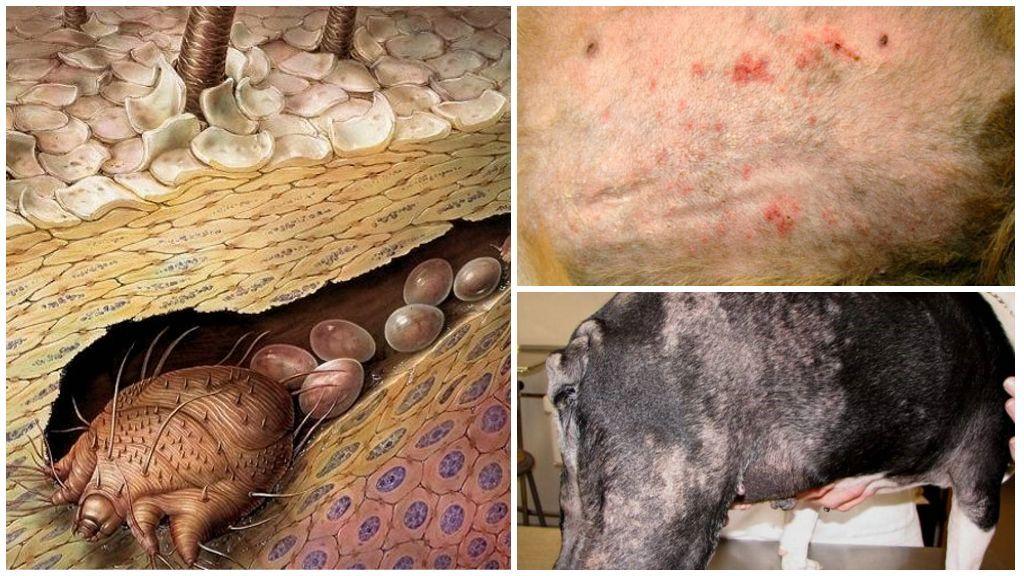
In addition to the main therapy, drugs are prescribed to strengthen the immune system and the general health of the animals.
Folk remedies
Folk remedies also help to cope with demodicosis. To begin with, it is recommended to wash the animal well. To soften the crusts that have formed on the affected parts of the skin, it is worth wiping them with a soapy solution with the addition of Creolin.
A day later, it is recommended to wash the cow with a solution made on the basis of ash alkali. This will help increase the effectiveness of the therapy.
Processing of premises and inventory
It is important to consider that ticks can live separately from the animal. Therefore, it is so important to pay attention to the processing of the premises in which the cows live. It is worth cleaning the pen from waste products daily. Washing the feeders and drinking bowls is also important. In this case, it is imperative to use disinfectants and pour boiling water over the containers. If necessary, the stall should be washed with antiseptic preparations. A farmer who can also carry ticks is advised to wash their hands thoroughly after contact with animals. It is important to use antibacterial soap.
Preventive measures
All new individuals that enter the farm should be examined for ticks. After a new animal appears in the herd, it is recommended to place it in a stall or a separate corral for a certain time. After the end of the incubation period, as a preventive measure, it is worth using a weak solution of "Cypermethrin" to treat the cow.
With the arrival of heat, it is necessary to examine all individuals for the first symptoms of pathology. It is imperative to carry out general cleaning in the premises in which the cows are kept. Every day it is worth removing feces and, if necessary, washing the cows.
Preventive treatment of the walking area and cleaning tools is also important. It is recommended to wash your hands after contact with animals. If the stall becomes dirty, it should be cleaned with antibacterial agents.
The development of demodicosis in cattle is considered a fairly common pathology that can lead to negative health consequences. If measures are not taken in time, there is a risk of slowing down the development of animals and reducing their productivity. Therefore, at the first symptoms of a violation, you should contact your veterinarian.

